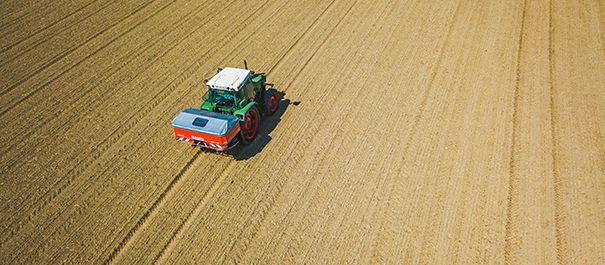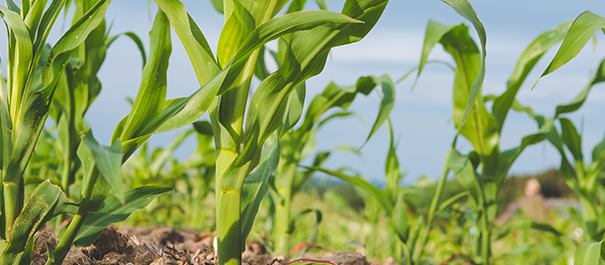Hvala vam!
Primili smo vaš zahtjev za registracijom i ubrzo ćemo vam poslati e-poruku radi potvrde vaše adrese e-pošte.
Dovršite ovu registraciju klikom na poveznicu u toj e-poruci.
Pravilima privatnosti
Administrator vaših osobnih podataka bit će LAT Nitrogen Austria GmbH, (gdpr@lat-nitrogen.com). Detaljne pojedinosti o obradi osobnih podataka mogu se pronaći u našima pravilima privatnosti. Ove informacije također ćemo vam pružiti u poruci e-pošte s potvrdom o pretplati na bilten
Molimo vas da potvrdite da ste pročitali i da ste suglasni s našima pravilima privatnosti prije nastavka.
Kako vam još možemo pomoći?
Željeli bismo vam e-poštom poslati pojedinosti ili naše najbolje ponude te najnovije proizvode i usluge. Pažljivo ćemo postupati s vašim osobnim podacima. Nikada nećemo prodati vaše podatke trećim stranama. Odabirom kućica u nastavku potvrđujete da prihvaćate primati marketinšku komunikaciju od društva LAT Nitrogen Austria GmbH.
Možete se predomisliti u bilo kojem trenutku tako da kliknete na poveznicu za otkazivanje pretplate u podnožju bilo koje poruke e-pošte koju primite od nas ili tako da nam se obratite na gdpr@lat-nitrogen.com.
Hvala vam!
Primili smo vaš zahtjev za registracijom i ubrzo ćemo vam poslati e-poruku radi potvrde vaše adrese e-pošte.
Dovršite ovu registraciju klikom na poveznicu u toj e-poruci.
Registracija je neuspješna.
Vaša adresa e-pošte već je registrirana
ili je došlo do greške na poslužitelju.







Za silažni kukuruz preporučuju se tla koja su bogata hranjivim tvarima i koja imaju visok udio organske tvari. Zbog uklanjanja cijele biljke, apsolutno je nužna kompenzacija unutar operativnog ciklusa. Kao i kukuruz u zrnu, i silažni kukuruz zahtijeva dobro prozračena tla te je osjetljiv na zbijenost tla i strukturne probleme u tlu. Zbog toga se odgovarajuća masa korijena i funkcija otpuštanja postrnih usjeva smatra prednošću.
Kukuruz ne zahtijeva mnogo vode u odnosu na prinos, ali s obzirom na to da je C4 biljka, za visoke mu je prinose potrebno mu mnogo topline i hranjivih tvari.
Da bi se pronašla ispravna sorta kukuruza za svaku lokaciju i za pojedine uvijete dozrijevanja, postoji mnogo raznih sorti. Različito dozrijevanje pojedinih sorti navedeno je u indeksu zrelosti i proteže se od FAO 200 do preko FAO 400.
Silažni je kukuruz prikladan i za više nadmorske visine te ga se zbog toga može pronaći na gotovo svim poljoprivrednim područjima.
Silažni kukuruz obično se upotrebljava za ishranu životinja. Također, biljka kukuruza sirovina je u pogonima za proizvodnju bioplina s maksimalnim prinosom plina.
Neovisno o recikliranju, veliki dio cijele biljke uvijek se odreže i služi za silažu. Ispravno vrijeme žetve s visokim sadržajem šećera i škroba ima pozitivan učinak na kvalitetu silaže.
Usjevima silažnog kukuruza jednako je jednostavno upravljati kao i usjevima kukuruza u zrnu. Nakon sjetve od oko 9 – 11 sjemenki po m², upotrebljava se herbicid za kukuruz ili prije ili poslije nicanja, do faze šest listova.
Posebice kod plodoreda s pašnjacima i krmivom, povećan je rizik od štetnika uzrokovanim ličinkama žičnjaka. Ovdje može pomoći dorada sjemena prije sjetve.
U slučaju velikog udjela kukuruza u plodoredu, prvenstveno je potrebno spomenuti kukuruznog moljca i kukuruznu zlaticu. Mjehurasta snijet također je važna gljivična bolest, ovisno o sorti i vremenskim uvjetima.
Gljivične bolesti lako se prenose na kukuruz s prethodnih usjeva. Te se infekcije otkrivaju nakon berbe u vrijednostima mikotoksina usjeva. Male količine kukuruza u plodoredu, jednostrana dušična gnojidba u ispravnim količinama i upotreba manje osjetljivih sorti ima snažan utjecaj na ove rezultate. Fungicidi za kukuruz se trenutačno upotrebljavaju samo kod sjemenske proizvodnje.
(Jedinica/t proizvodnje)
(Jedinica/t proizvodnje)
N
12
12
Vrlo osjetljivo
P2O5
4.2
4.2
Vrlo osjetljivo
K2O
12
12
Vrlo osjetljivo
MgO
1.9
1.9
Osjetljivo
SO3
2.2
2.2
Osjetljivo
TE
Zinc (Zn) from the 6-leaf stage, boron (B) enhances fecundation
Prva primjena

Druga primjena

Jedna doza ukupno potrebne količine hranjivih tvari za optimalnu gnojidbu kukuruza. Kukuruzu su hranjive tvari potrebne u prvoj fazi prije cvata. Zbog toga je gnojidba prije sjetve optimalna za formiranje prinosa. S pomoću prikladne NPK formule, sve se potrebne hranjive tvari mogu primijeniti jednom primjenom. Dušična gnojidba kukuruza, temelji se na iznošenju, te iskoristivosti dušika iz tla, a iznosi otprilike 160 – 180 kg N/ha. Važno je da su glavne hranjive tvari koje se upotrebljavaju topive u vodi – od faze šest listova nadalje, svakodnevno se počinje formirati masa, što se povezuje s visokim stopama upijanja hranjivih tvari od nekoliko kg/ha na dan. Naglasak na fosfornu gnojidbu kukuruza osigurava željene prinose pri upotrebi stajskog gnojiva i gnojnice.
Pronađite najbolje mineralno gnojivo za svoje uvjete pomoću tražilice proizvoda.
Posljednja gnojidba u fazi dva do četiri lista Ako se očekuju visoki prinosi, a time i veće potrebe dušika, te kod lakih tla da bi se spriječili gubici ispiranjem, dušična je gnojidba podijeljena u 2 primjene. U tom se slučaju jedna trećina ukupne količine dušika mora dodati kao brzodjelujući dušik u nitratnom obliku u fazi dva do četiri lista. Kasnija gnojidba ne povećava prinos, ali donosi rizik od paleža lista i odgađa dozrijevanje.
Pronađite najbolje mineralno gnojivo za svoje uvjete pomoću tražilice proizvoda.
LAT Nitrogen Croatia d.o.o
Ivana Gundulića 28
31000 Osijek, Hrvatska